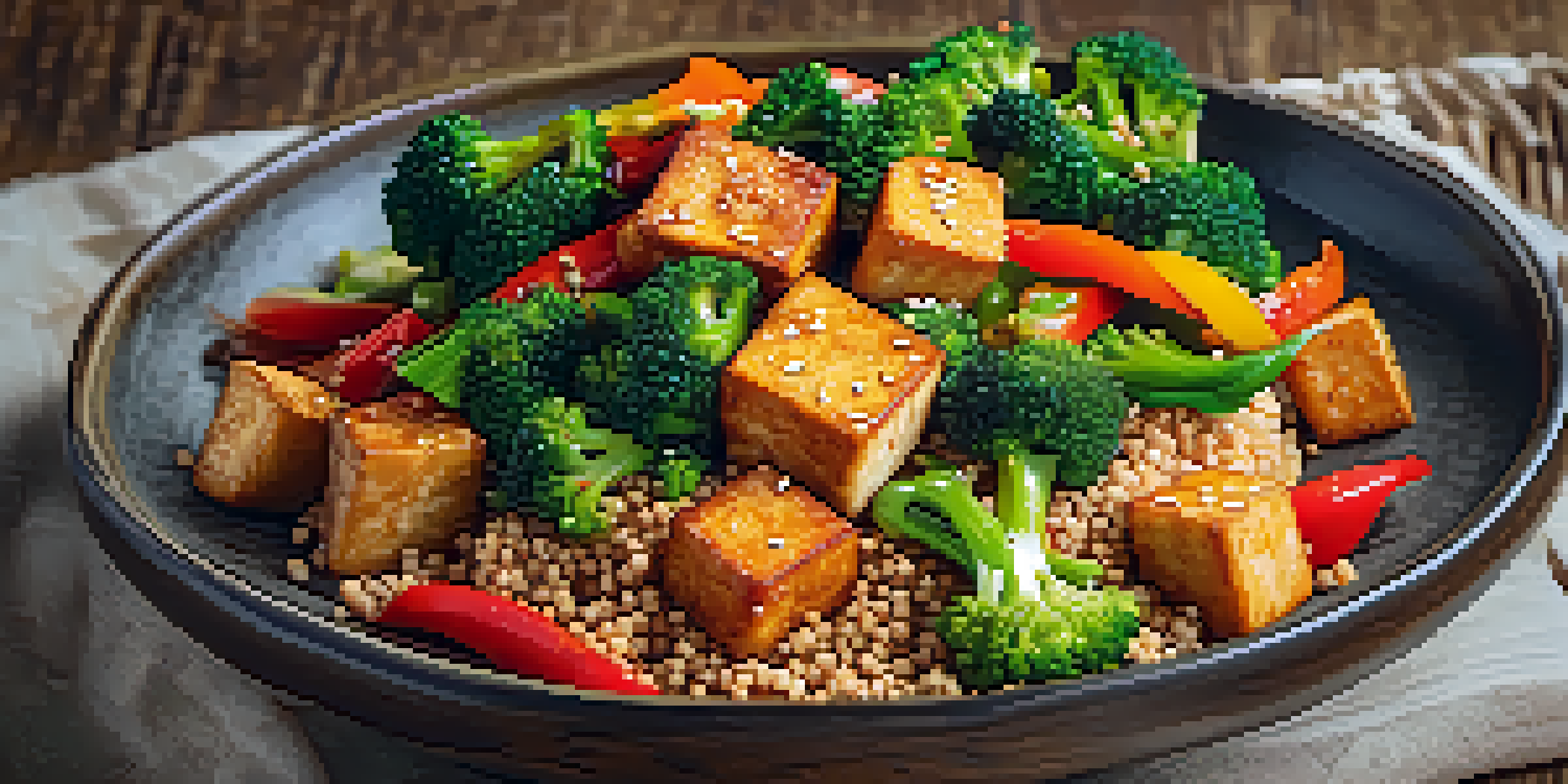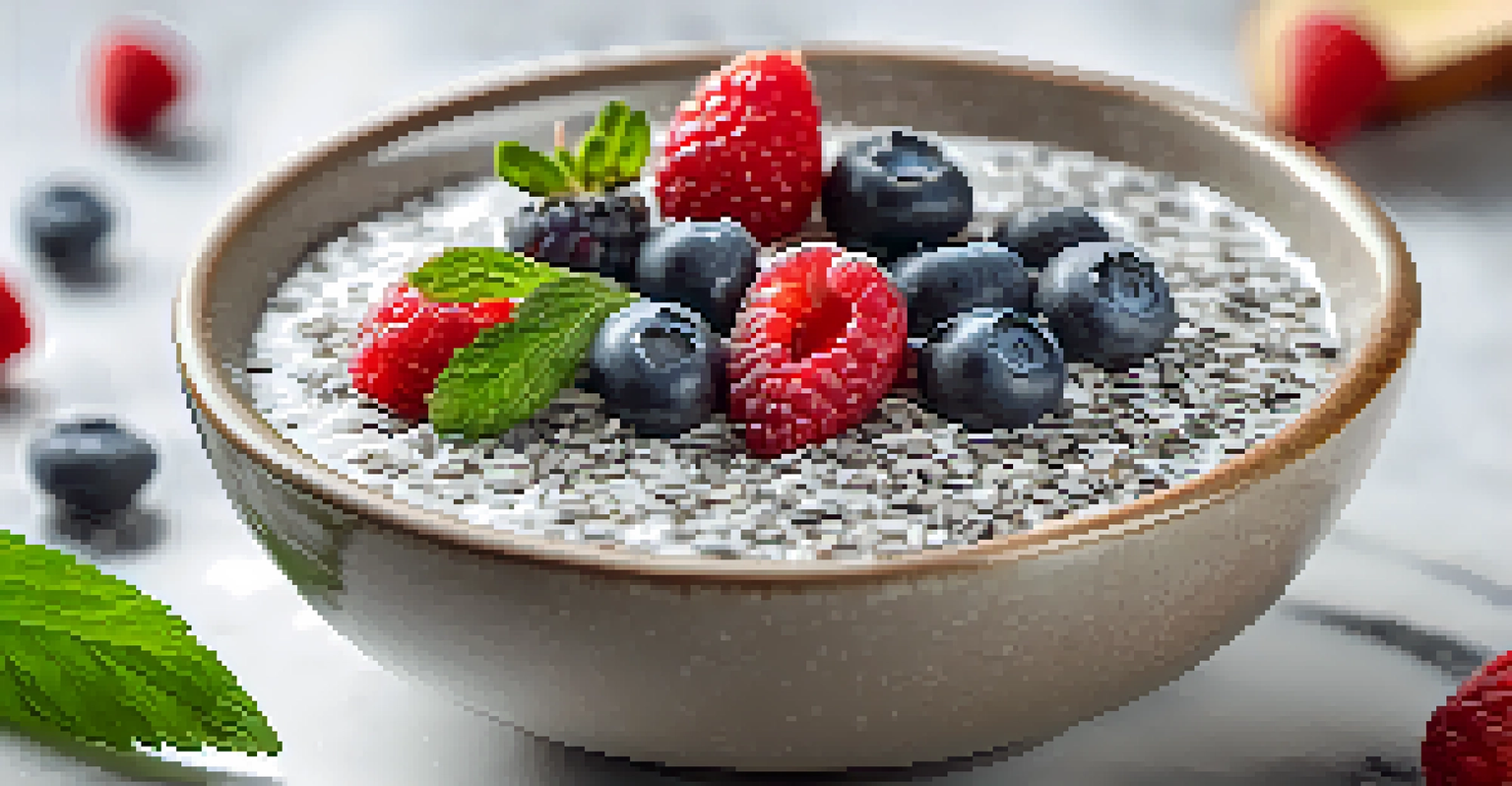Cooking Temperatures for Vegan Proteins: A Safety Guide

Understanding Vegan Proteins and Their Safety Needs
Vegan proteins, like tofu, tempeh, and legumes, offer numerous health benefits. However, cooking them properly is crucial for both safety and flavor. Understanding the unique properties of these proteins can help you avoid potential foodborne illnesses and enhance your culinary creations.
Let food be thy medicine and medicine be thy food.
Unlike animal proteins, many vegan proteins require specific cooking temperatures to ensure they are safe to consume. For example, legumes should be cooked thoroughly to eliminate anti-nutrients that can interfere with digestion. By knowing how to handle these ingredients correctly, you can enjoy their full nutritional benefits without worry.
Moreover, cooking vegan proteins at the right temperatures not only ensures safety but also improves texture and taste. From crispy tofu to tender lentils, achieving the ideal cooking temperature can elevate your dishes. Let’s dive deeper into the specific cooking temperatures for various vegan proteins.
Tofu: Cooking Temperatures for Perfect Texture
Tofu is a versatile vegan protein that can take on many flavors, but it’s essential to cook it at the right temperature. The ideal cooking temperature for tofu is around 350°F (175°C). Cooking at this temperature allows the tofu to become crisp on the outside while remaining soft on the inside, creating a delightful contrast.

When frying or baking tofu, ensure it's pressed to remove excess moisture. This step is crucial, as it helps the tofu absorb marinades and flavors better. Cooking it at the right temperature also helps prevent it from becoming rubbery, which can happen if it’s overcooked.
Cook Vegan Proteins Safely
Understanding the right cooking temperatures for vegan proteins ensures safety and enhances flavor.
Incorporate tofu into your meals by stir-frying, baking, or grilling it. Each cooking method can yield delicious results if the temperature is monitored. So, don’t shy away from experimenting with tofu; just keep that 350°F mark in mind!
Tempeh: Achieving the Right Cooked Texture
Tempeh is another fantastic vegan protein that benefits from proper cooking temperatures. The recommended cooking temperature for tempeh is around 375°F (190°C). This temperature helps to caramelize the natural sugars in tempeh, enhancing its nutty flavor and giving it a delightful crunch.
You are what you eat, so don’t be fast, cheap, easy, or fake.
Before cooking, steaming tempeh for about 10 minutes can improve its texture and make it more receptive to marinades. Once you’ve steamed it, you can grill, sauté, or bake it at the proper temperature for maximum flavor. This step is essential for elevating the taste of tempeh in your dishes.
Tempeh can be used in various recipes, from stir-fries to sandwiches, and mastering the right cooking temperature will ensure it shines in your meals. Remember, achieving that perfect brown exterior is all about hitting that 375°F mark!
Legumes: Cooking Times and Safety Temperatures
Legumes, including beans, lentils, and chickpeas, are rich in protein and fiber but require specific cooking temperatures for safety. Generally, legumes should be cooked to an internal temperature of around 190°F (88°C) to ensure they are safe to eat. This temperature is crucial for breaking down compounds that can cause digestive issues.
For dried legumes, soaking them overnight can significantly reduce cooking time and enhance digestibility. Once soaked, boil them until they reach that essential internal temperature, making sure they’re tender but not mushy. This process ensures that you get the most out of their nutritional value.
Tofu and Tempeh Perfect Temperatures
Cooking tofu at 350°F and tempeh at 375°F creates the ideal texture and taste for these versatile proteins.
Incorporating legumes into your diet can be delicious and nutritious, especially when cooked properly. From hearty soups to salads, knowing the right cooking temperatures helps you enjoy their full potential while keeping your meals safe.
Seitan: The Importance of Cooking Temperature
Seitan, often referred to as wheat meat, is a popular protein source for many vegans. To ensure it’s both safe and flavorful, it should be cooked at a minimum temperature of 165°F (74°C). This temperature is essential for killing any potential bacteria and achieving the right texture.
Cooking seitan at higher temperatures, like when grilling or sautéing, can create a satisfying chewiness that mimics meat. Be mindful, though—overcooking can lead to a rubbery texture, so aim for that sweet spot of 165°F. This careful attention to temperature can make all the difference in your dish.
Seitan can be used in various recipes, from stir-fries to BBQ dishes. By ensuring you cook it correctly, you can fully enjoy its protein-packed benefits while satisfying your taste buds.
Quinoa: Cooking Temperatures for Fluffy Perfection
Quinoa is a nutrient-dense seed that serves as an excellent protein source for vegans. To cook quinoa perfectly, bring water to a rolling boil of around 200°F (93°C) and then reduce it to a simmer. This method not only helps to cook the quinoa evenly but also ensures it remains fluffy and light.
After rinsing quinoa to remove its natural coating, which can taste bitter, it’s vital to follow the correct water-to-quinoa ratio. Typically, using two cups of water for every cup of quinoa works well. Once cooked, let it sit covered for a few minutes to enhance its fluffy texture.
Legumes and Quinoa Cooking Tips
Legumes should reach 190°F for safety, while quinoa benefits from a boiling and simmering method for a fluffy texture.
Incorporating quinoa into your meals can be both easy and delicious. Whether used as a base for salads or mixed into stir-fries, mastering the right cooking temperature will ensure it’s a satisfying addition to your plate.
Chia Seeds: Cooking and Preparation Tips
Chia seeds are packed with protein, fiber, and omega-3 fatty acids, making them a fantastic vegan addition to your diet. Unlike other proteins, chia seeds don’t require cooking to be safe; they can be consumed raw. However, soaking them in water or plant milk helps them expand and form a gel-like consistency, which can enhance their nutritional benefits.
When preparing chia seeds, a common ratio is one part seeds to three parts liquid. Let them soak for at least 20 minutes to ensure they absorb the liquid properly. This transformation makes them easier to digest and can add a delightful texture to smoothies or puddings.

Using chia seeds in your dishes can be both nutritious and exciting. By understanding their preparation process, you can unlock their potential and enjoy the health benefits they offer without the need for cooking.
Final Thoughts on Cooking Vegan Proteins Safely
Cooking vegan proteins safely is essential for enjoying their health benefits while minimizing risks. By understanding the appropriate cooking temperatures and methods for each type of protein, you can create delicious and safe meals. Remember, whether it’s tofu, tempeh, legumes, or grains, each has its unique needs.
Experimenting with these cooking temperatures can lead to discovering new flavors and textures in your dishes. From crispy tofu to fluffy quinoa, the right preparation is key to a satisfying vegan experience. As you embrace these practices, you’ll find that cooking vegan proteins can be both enjoyable and rewarding.
So, next time you’re in the kitchen, take a moment to think about the cooking temperatures for your vegan proteins. By prioritizing safety and flavor, you’ll be well on your way to creating delicious plant-based meals that everyone can enjoy.